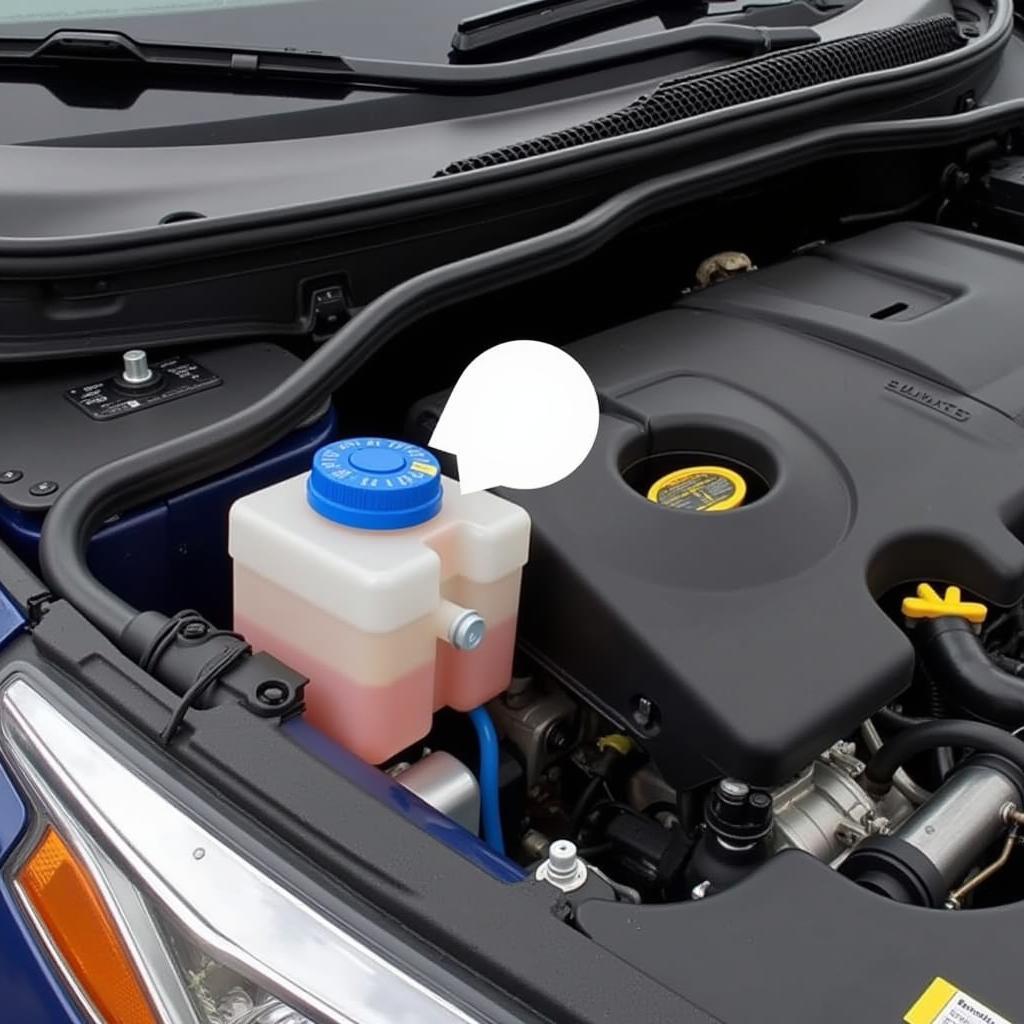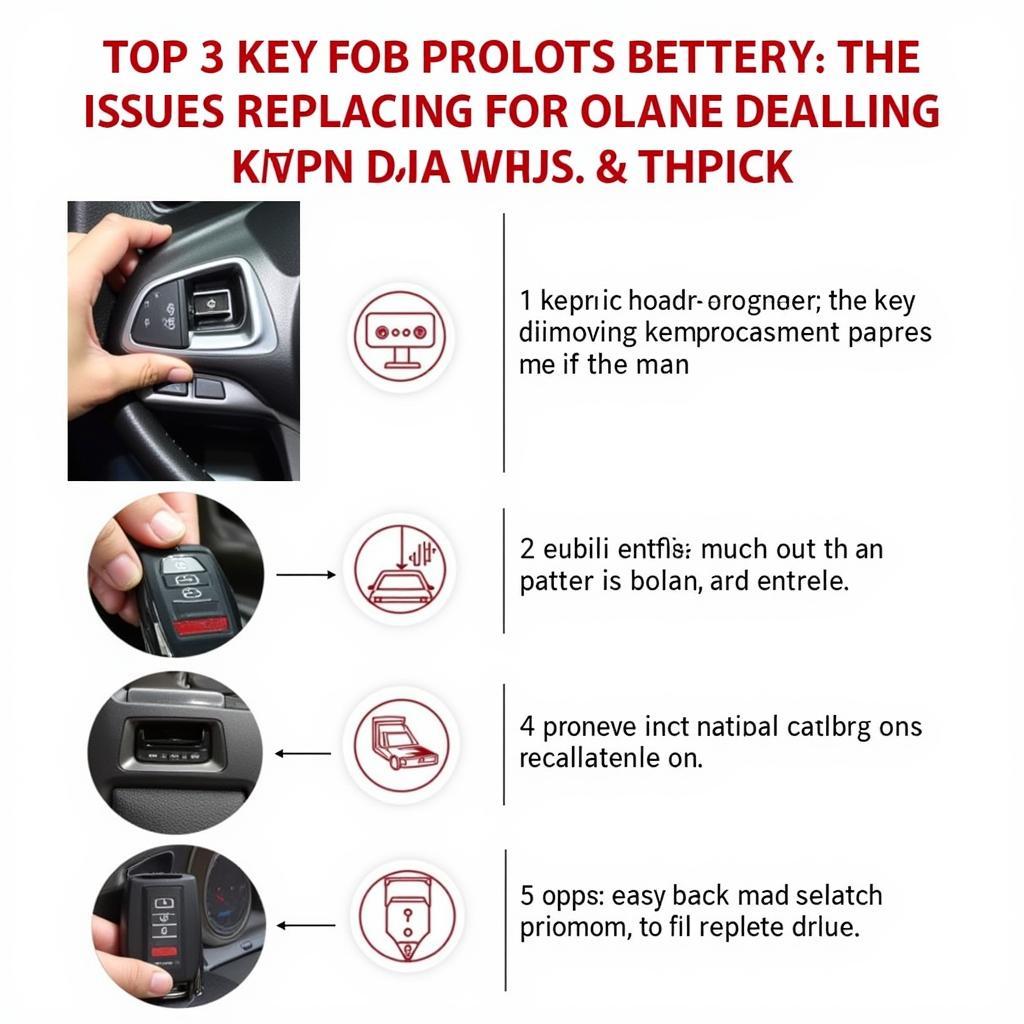The brake warning light on your dashboard is a crucial safety feature, designed to illuminate if your 2019 Nissan Altima’s braking system encounters an issue. Ignoring this warning light could lead to brake failure and a dangerous situation. This comprehensive guide will delve into the common causes of a 2019 Nissan Altima brake warning light and provide potential solutions to help you regain control of your vehicle’s safety.
Understanding Your Brake Warning Light
When you start your Altima, the brake warning light should illuminate briefly as part of the system self-check. This is perfectly normal. However, if the light stays on or illuminates while driving, it indicates a potential problem within your braking system that requires immediate attention.
Common Causes of a 2019 Nissan Altima Brake Warning Light
Several factors can trigger the brake warning light in your 2019 Altima. Here are some of the most common culprits:
1. Low Brake Fluid Level
Brake fluid is the lifeblood of your car’s braking system, transmitting the force from your foot on the brake pedal to the wheels. A low brake fluid level is often the primary reason for an illuminated brake warning light.
Solution: Check your brake fluid reservoir, conveniently located under the hood on the driver’s side. If the fluid level is below the “MIN” mark, it needs to be topped up. However, simply adding brake fluid won’t solve the underlying issue of a leak, so it’s crucial to inspect for leaks and address them promptly.
2. Worn Brake Pads
Your Altima’s brake pads are designed to wear down over time. When they become too thin, a sensor embedded within the pad triggers the brake warning light to signal it’s time for a replacement.
Solution: If your brake pads are worn, they need to be replaced to ensure optimal braking performance. While some mechanically inclined individuals may choose to tackle this task themselves, it’s generally recommended to have a qualified mechanic replace brake pads to guarantee proper installation and safety.
3. Faulty Brake Caliper
The brake caliper houses the piston that presses the brake pads against the rotor, creating the friction needed to stop your vehicle. A sticking or seized caliper can cause the brake pads to drag on the rotor, leading to uneven wear, reduced braking efficiency, and potentially triggering the brake warning light.
Solution: A faulty brake caliper typically requires professional diagnosis and repair. A mechanic can inspect the caliper for signs of damage or seizure and recommend the appropriate course of action, which might involve rebuilding or replacing the caliper.
4. ABS Issue
Your Nissan Altima is equipped with an Anti-lock Braking System (ABS), which prevents the wheels from locking up during hard braking, enhancing vehicle control. If the ABS system malfunctions, it can trigger the brake warning light.
Solution: Diagnosing an ABS issue typically requires specialized equipment and expertise. It’s recommended to take your Altima to a qualified mechanic or dealership for proper diagnosis and repair.
5. Electrical Fault
While less common, an electrical fault within the braking system, such as a short circuit or faulty sensor, can also illuminate the brake warning light.
Solution: Troubleshooting electrical problems requires specialized knowledge and tools. A qualified mechanic can diagnose the electrical system and pinpoint the source of the fault.
What to Do When Your Brake Warning Light Comes On
“Ignoring a brake warning light is like playing Russian roulette with your safety,” cautions John Smith, a seasoned automotive technician with over 20 years of experience. “It’s crucial to address the issue immediately to prevent potential brake failure and accidents.”
Here’s a step-by-step guide on what to do:
-
Safely pull over: Find a safe location to pull over as soon as possible.
-
Check your brake fluid: As mentioned earlier, low brake fluid is a common culprit. Carefully inspect the reservoir and top it up if needed.
-
Inspect your brake pads: If you’re comfortable doing so, you can visually check the thickness of your brake pads through the wheel spokes.
-
Avoid driving: If you suspect a more serious issue, such as a faulty caliper or ABS problem, avoid driving your Altima and contact a qualified mechanic immediately.
 Brake Fluid Reservoir on a Nissan Altima
Brake Fluid Reservoir on a Nissan Altima
Conclusion
The brake warning light in your 2019 Nissan Altima is a critical safety feature you should never ignore. By understanding the potential causes and following the recommended solutions, you can help ensure your braking system remains in peak condition, keeping you and your passengers safe on the road. Remember, when it comes to brakes, erring on the side of caution is always the wisest approach.

